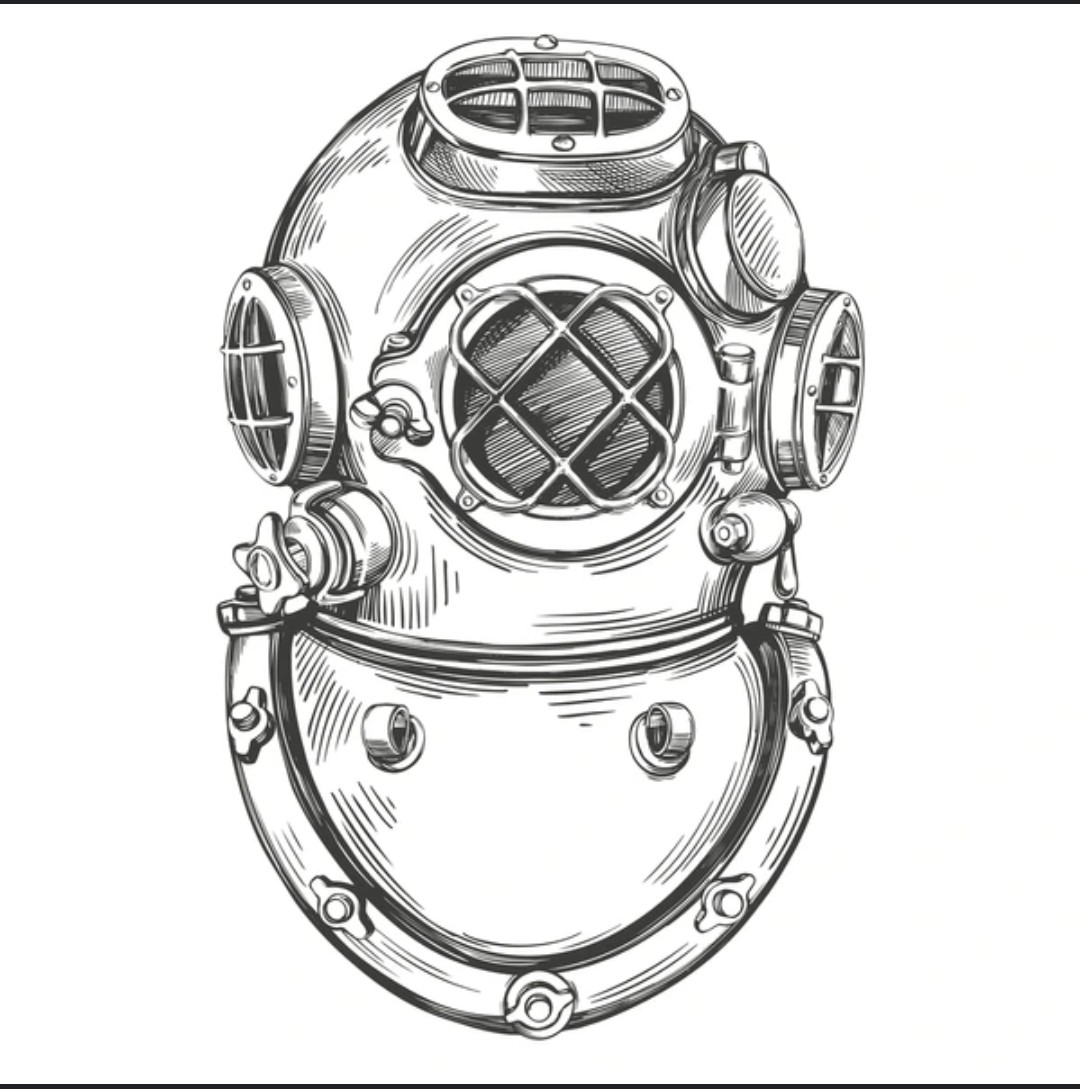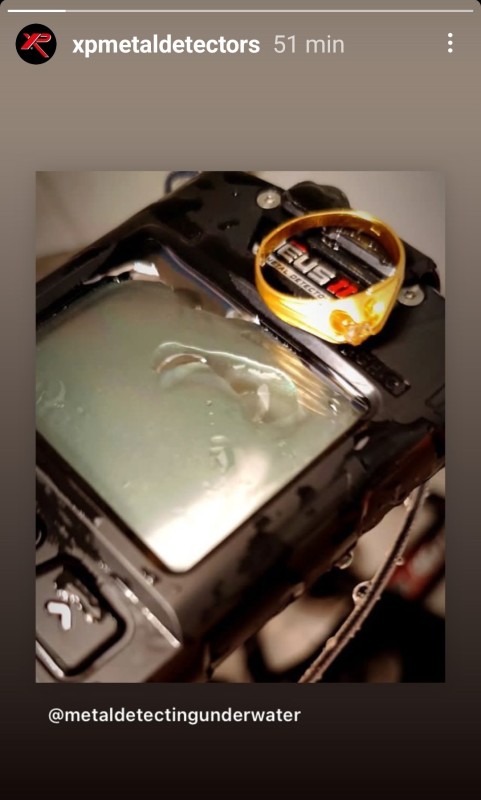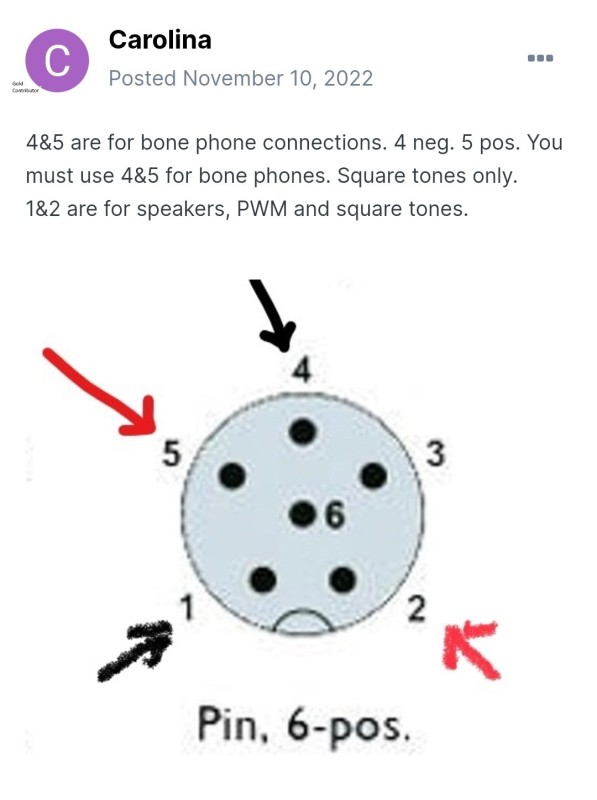-
Posts
844 -
Joined
-
Last visited
Content Type
Forums
Detector Prospector Home
Detector Database
Downloads
Posts posted by Skull diver
-
-
2 hours ago, CPT_GhostLight said:
I prefer crisp pops
Me too.The pinpointing immediately performed better (without to use it, cause now I own a 9").
Also, when the sound is shorter, it appears to be exactly in the middle of the coil (like it should be)...What I found weird was the complete difference in how the soft treshold I use and the warble changed radically for the better.
-
I would like to report what I discovered today during a session on the bottom.
For a long time I have been complaining about instability in P12 @ 40Khz while in saltwater.
So today by changing audio filter to 1 while before it was on 4 I finally got the ability to increase sensitivity and decrease reactivity.It seems that the prolonged tone by higher A.F. in pitch not only makes difficult to locate the signal (even with 9" coil 😒) but increase falsing too.
At the moment I am not going to give an opinion as I was going to leave the beach when I accidentally gained audio stability and I will need more tests.I will tell you... -
In my area I still struggle with people between my.....Plans.
Missed the super early wake up this morning and waiting them to leave the fuc....g beach at a decent time before sunset.
I might need a grenade or more🤬☢️
-
Celebrate your addiction in style 😵
-
I have such a hard time digging anything that doesn't fall between 40 and 65 that I can't imagine how many of these and other pieces I've gone over.
Really kudos for your patience🧐
-
The following is more of a modest technical report than the story of my latest session on the seafloor.
Days ago I posted my (negative) impressions of the impact of beach programs on thin or open targets, comparing stainless steel necklaces and bracelets to gold on the ID scale.
Briefly summarized, I found no way to achieve an efficient and stable setting that could be reused underwater in a salty environment.
Based on P12 and after several modifications, I arrived at the only final setting that allowed me to conduct effective research.
Assuming a pair of frequencies (never stated), we still know a limit of 14/24/40 kHz in the menu.
However, I got the impression that in the P12 the sensitivity was higher having slightly more interference though on 24Khz and reduced sensitivity down to 88.
This makes me think of a second frequency (less than 24 kHz, coupled as 14/24 rather than 4/14 in diving mode.
Again, I assume that in P11 the behavior is less responsive to thin targets in spite changing on 40 kHz.
And to finish, I add that no particular filter changed the audio noise for the better outside of a high value of reactivity on 2.5 .
Here is a quick summary of the program.
Reactivity 2.5
Sensitivity 90Salt sens 8
Pitch tone
Treshold 0
B.caps 0
Notch 0
Silencer 5
Iron vol 5
Disc 5.0Audio filter 5
GB tracking
Magnetic rejectand underhere a common fish finally audible among way too noise reduced.
-
On 9/8/2023 at 2:38 PM, midalake said:
In my testing the D2 did not lose depth until sensitivity 88.
I must say that reflecting on your statement I have like a suspicion about 10-11-12 programs now.
I mean I am struggling to understand why in gold mode the reaction to the targets is radically different at the same frequency and settings?
I have two hypotheses about this: the first is that although having 14/24/40 kHz frequency offsets, none of the 3 is actually what appears on the screen but way less instead, or the Salt sens filter and audio response act differently for the three beach programs.
At least during a trivial air test, the targets must be read with an ID and from a reasonable distance.Not to mention that I used for test purpose a sensitivity level of 95🤐
-
Way to go 🏴☠️
-
13 minutes ago, midalake said:
As a salt beach hunter, I don't think you will be able to use the gold program at all under water.
You are correct that the Beach Sensitive program is the only salt mode that has a good shot at chains! I think you should try one different adjustment. First if you're trying to hunt with 95 sensitivity under water>forget it. I cannot even hunt the wet sand in my location at 95 sensitivity.
In my testing the D2 did not lose depth until sensitivity 88. I would try keeping your Audio Response at 6 and turn down sensitivity to achieve hunt ability. I am 100% confident an Audio Response of 6 and a sensitivity of 88 will out hunt an Audio Response of 4 and sensitivity of 95 on fringe targets. You will also get a sharper response on small open gold chains.
The point I am trying to make> There is no need to overdrive sensitivity to achieve good depth.
Another point>Threshold. Running a threshold can amplify crap sounds. I do not see the reason to run ANY threshold. Running a threshold may be a self-defeating adjustment, especially in saltwater conditions.
I'll try to make exactly the settings you're suggesting and compare with the program I use now.
The fact is, with my settings, I can't see how this will improve if not begin worse when submerged 😒
-
-
3 hours ago, Tony said:
digging bottle-caps with an Excal ????
It happens when in duck-mode😂
-
-
9 hours ago, CLH said:
I have 2 cables already (2 machines) and can't see buying another cable so the factory one just sits in a bag doing nothing. I don't dive and never plan to, it would be just for wading as deep as I can walk so the length should never change. I am mostly wanting to make sure there is no reason this should not work before I cut it.
I can say that if on the remote and coil the cable is correctly placed, the signal and obviously the connection between the two is effective.
Just this morning I had poor visibility in the water and as soon as I turned on the remote it said no coil 😒.
Approached the coil I saw the end of the cable disconnected and simply repositioned the clamp on the wing of the coil .Instant recognition and off it went.
By that I mean, if you cut the cable off one or both ends, you would lose the original supports that hold the ends of the cable in place.... That yes, it would create connection problems, unless you provide for creating a new rigid support with which to clamp the cable near the remote and coil 🫢
-
I have never been a fan of cables coiled around the rod, although this is a natural consequence when with only 50cm in diving configuration, it is all we have.
I would not cut the original antenna cable, but rather buy a couple of meters of RG 174 to make two sizes (one spare) and cut just enough between coil and remote .
At that point it would also be unnecessary to go through the inside of the rod, and two clamps would be enough to solder the cable next to it.
-
No matter the K... That's a beauty 😍
-
14 minutes ago, Rattlehead said:
Next week I'll be going on vacation to Gulf Shores Alabama and hoping to try my hand at beach detecting while I'm there. In all my 35+ years of detecting, I've never once had my detector on a beach, so this will be brand new for me. I'd like to set up a beach program that at least sounds and behaves similar to my go-to land program, which is Fast with pitch tones. Is it as simple as loading up the beach program and making the tone adjustments, or is there other settings that I need to fine tune? Also, I want to concentrate on targets in the gold range without digging too much clad or other high conductors. My time there will be limited so I'm willing to give up most silver jewelry and even some tiny earring sized gold jewelry just to cut down on the number of targets I dig. I'm mostly looking for gold rings. So, I was thinking of setting up a notch pattern that accepts 40-75? What are your thoughts? I'm using version .71 if that matters.
If there's any other beach hunting tips or tricks you want to throw my way, I'd appreciate it! The only thing I really know is that I don't plan on going INTO the water. I'll be looking for hard packed wet sand. I'm a total noob at this! I realize my chances of actually finding a gold ring are pretty slim. Just want to check this off of my bucket list.
Thanks!
With 35 years of experience under your belt, I doubt you'll find it that hard to unearth any pieces 🫢...
However, if you are used to pitch tone, you can try P13 Beach P and maybe modify something to stabilize a bit on the wetsand.
Recently there was some discussion about lowering the A.R. to 3-4 and instead raising the audio filter to 4-5 , as well as keeping the reactivity a bit higher if you don't want too much audio noise.
I have found it useful to raise it up to 1.5 sometimes, but I only use the Deus2 on the seabed 😌.
I'd rather avoid any notch and high disc.level.
Instead, decide to dig or not after checking the ID...
30 To 65 should be ok for most of the shines☢️
P.S. I forgot about your software version🤐...
What I'm talking about is possible with the 1.0/1.1 update, sorry😐
-
8 hours ago, TTT2866 said:
Just "dive mode". I didn't realise there was a salt/fresh water mode on the D2..?
Actually, all of the remaining programs are available to use in freshwater if you try.
I've seen recently a user with fast 40 program in a freshwater lake environment
-
I would like to be able to fly near Irvine to the coast and alongside some of you enjoy the show maybe over an ice cold beer, waiting for the first useful tide to flush out things....
Maybe in another life or toward retirement, just another 30 years or so😭
-
I do not have the opportunity to test nuggets, much less in soil that can really be called mineralized.
When I was on the bottom a few weeks ago, It happened to dig for a low aluminum signal and accidentally retrieve a broken steel necklace.The mesh is really thin, but not too thin either.
Unfortunately, I have to say that even though I have done air tests at different frequencies, with 9" coil and with a variety of settings, the beach and beach sensitive programs are not able to detect it at any distance.
Returning to the subject of a necklace, we know that it is a matter of detecting a single link and not the entire object, but that is enough to define what minimum size is suitable for the Deus2.
I dare say in millimeters, something between 4 and above.
-
I have always been fascinated by the natural factor, so much connected to the conformation of the coast.
In my case, being the Mediterranean a closed basin, many of the non-European cyclones arrive greatly reduced in strength and maritime effect.
Another story, on the other hand, manifests itself with thunderstorms, with rain and hail following very sharp drops in temperature.
I also have to say that strong wave energy, often makes things worse on the bottom, if it ever improves the wetsand area.
It really looks like a different game.
-
Personally, I found AR to be a valuable aid in emphasizing weak signals and thus gaining a few inches at least to flush out something others had gone over without success.
Fact is, I was forced to keep it at 6 because of the bonephones I was hearing really badly between the regulator bubbles, but now with the new headset I may try to cut down interference and attempt 40kHz.
I doubt unfortunately that in salt water I can get as much stability or audio silence, just because of the frequency.
I don't like it as much on 24kHz so I will try in the near future if it helps.
-
After many attempts, I have come to the conclusion that the only way to use in immersion without annoyance and audio noise is to use pitch tone, in addition to various modifications on maximum frequency and reactivity to perform decently.
(P11 and P12 as a base from scratch)
-
12 hours ago, Ferrous Grump said:
I'd like to know how to change them over, I have an extra pair of Grey Ghost
In my case, the quickest solution was to cut the bonephones' cable at the height of the headband and solder the poles there with the Grey Ghost wiring.
This means sacrificing your bonephones if they work properly.
Mine, being broken and with only one plate barely making sound, were now useless.
However, you can find a 6-pole connector and simply solder in the places that appear in the picture the positive and negative.
Remember to insulate with resin the solder in some way after testing the audio and all should be well 😌
(Thanks to Carolina for the diagram or whoever posted it before 🙏)
-
On 7/18/2023 at 2:55 PM, Compass said:
It had been nearly 5 months since I found my last piece of gold
I'd like to remember it, how long has it been since I've seen the magical color😐...I think I'll have to save the next piece as a symbol of revenge😂.
Anyway congratulations 🙏





Last 9 Months Gold
in Metal Detecting For Jewelry
Posted
The naked truth... Even a "professional" hunter cannot show today the old numbers.
A mix of better performing tools and competition, plus less loss of items, has lowered finds dramatically.Or at least that's my impression...😑